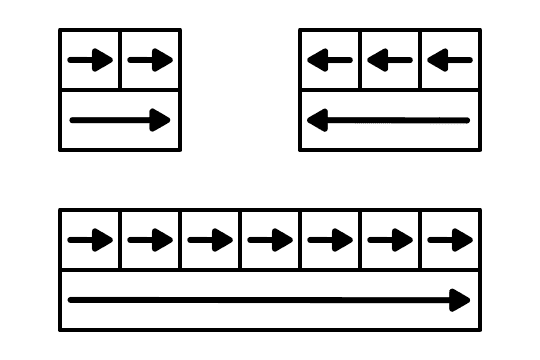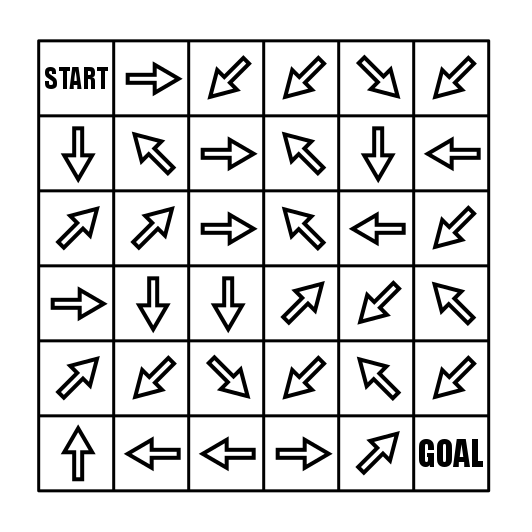Part 12 of our Arrow Maze Design Case study concludes our section on maze components. . This will be a short section because it needs very little explanation - the Long Arrow.
Here is an overview of what we will be covering in the 14 part series:
Arrow Maze Construction and Design:
Arrow Maze Components:
Extreme Arrow Maze examples:
Arrow Maze Design Case Study - Part 12 - Long Arrow Use
The Long Arrow is the name of an infinite number of arrows that are 2 or more blocks long. Instead of having 2 arrows in 2 blocks back to back moving the same direction…why not use 1 long arrow in one large rectangular block ? It makes the design of the grid more important (it is done last instead of first) and adds some visual interest to the maze. Check out this illustration:
Long Arrows
One thing to note is that this can only be used in the standard NSEW directions. 45 degree long arrows do not work. These arrows are also most common on the edges of the maze since once you include them in the center they can only be crossed with a Double Arrow or Warp (or moved around at the end).
Here is an example from my upcoming book that includes many long arrows.
And now we begin our final 2 posts with some fun an extreme examples !!! Part 13 is what I call the Kitchen Sink… ! But you will be to wait for the last two posts so we can take some time to review the year and also look ahead to 2022 !











